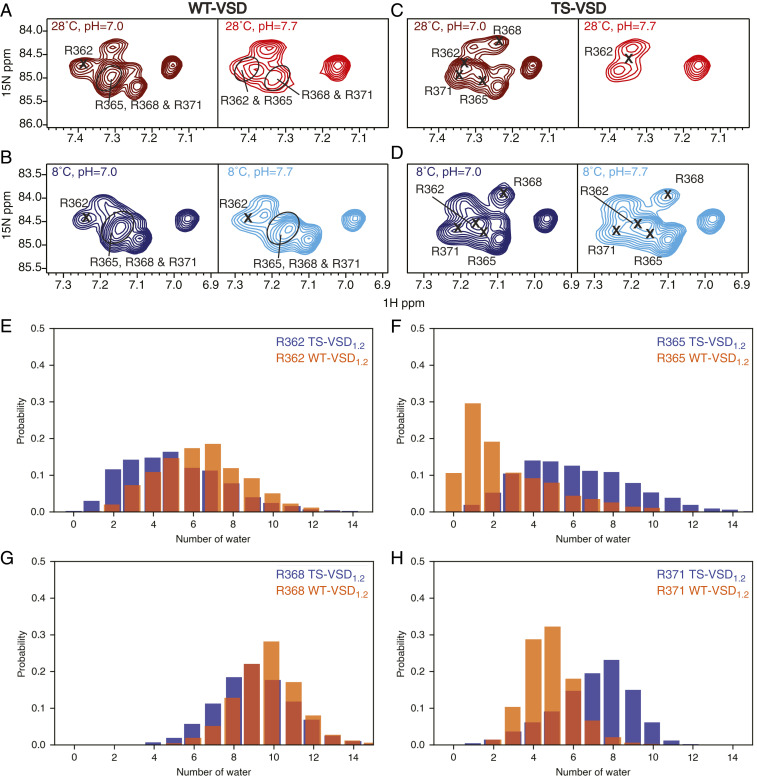Fig. 2.
Temperature dependence of solvent accessibility for the voltage-sensing arginines in WT-VSD and TS-VSD. 1H-15N TROSY-HSQC spectra of the arginine sidechain NεHε group for both WT-VSD (A and B) and TS-VSD (C and D) are shown at 28 °C (A and C) and 8 °C (B and D). For each condition, spectra at pH = 7.0 and 7.7 are compared to assess susceptibility to base-catalyzed H/D exchange as a measure of water accessibility. Peaks corresponding to arginine sidechains that are well protected from water will be present in the spectra at both pH values, while those that are exposed to water will disappear at the higher pH. Peaks corresponding to the sidechains of the voltage-sensing arginines (R362, R365, R368, and R371) were assigned by Arg to Lys mutagenesis at each position (SI Appendix, Fig. S4). The voltage-sensing arginine sidechains are observable at both pH values for WT-VSD at 8 and 18 °C and for TS-VSD at 8 °C, indicating good protection from water under these conditions. In contrast, for TS-VSD at 28 °C, the peaks corresponding to R365, R368, and R371 in TS-VSD at 28 °C disappear at pH = 7.7, indicating that these residues are no longer protected from H/D exchange in the TS-VSD at this temperature. (E–H) Histograms of the number of water molecules within 6 Å of Hε in the voltage-sensing arginines based on 1 μs of conventional MD simulations (histograms calculated over entire trajectory) also show a redistribution of water around the voltage-sensing arginines in TS-VSD1.2. A slightly larger amount of water is observed around R362 (E) and R368 (G) in the WT-VSD1.2, while the TS-VSD1.2 features more water around R365 (F) and R371 (H).

